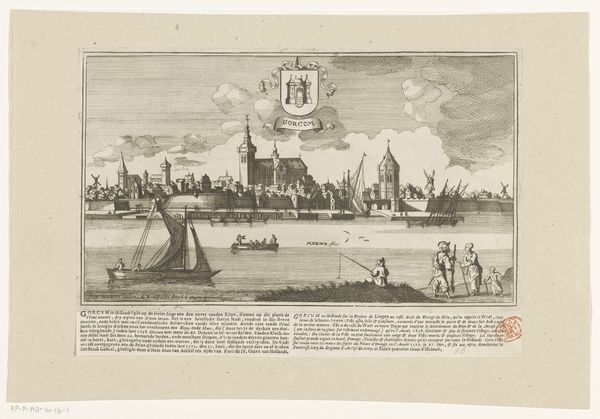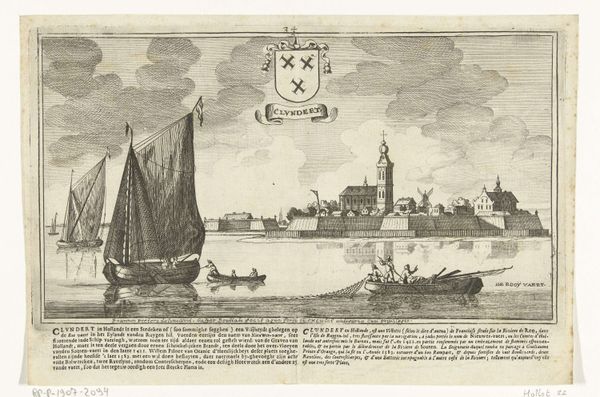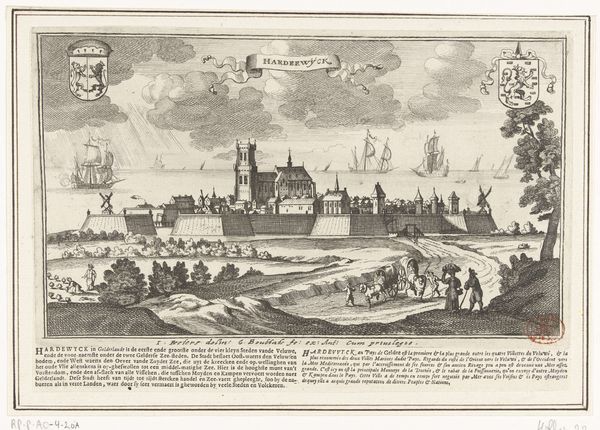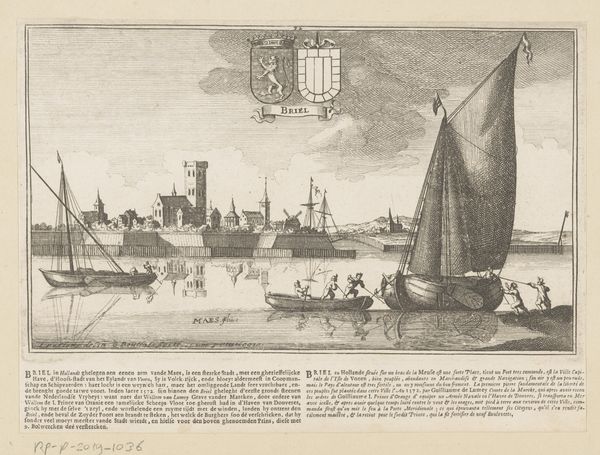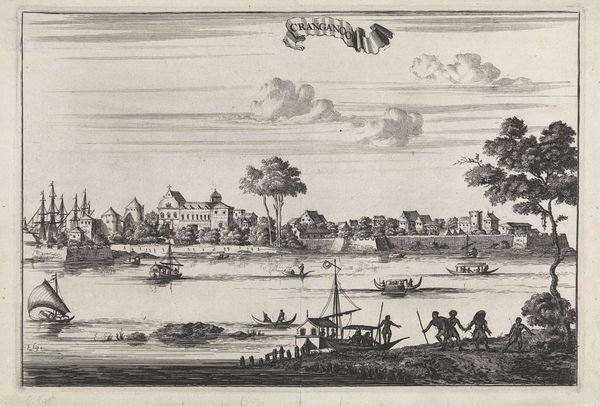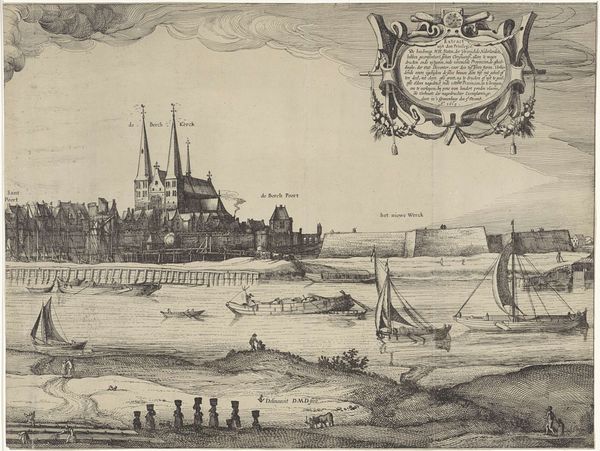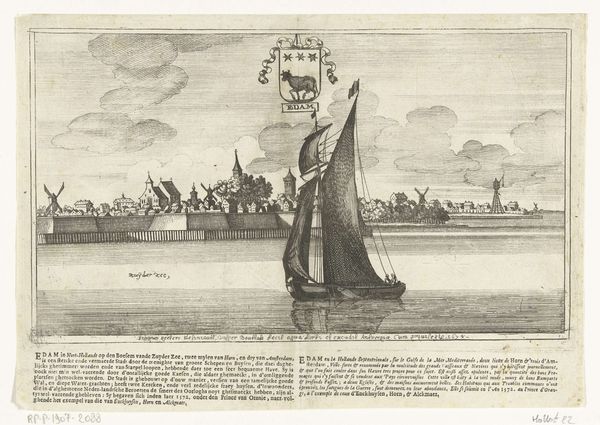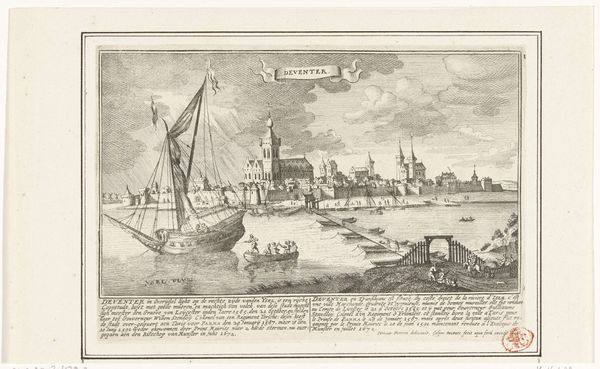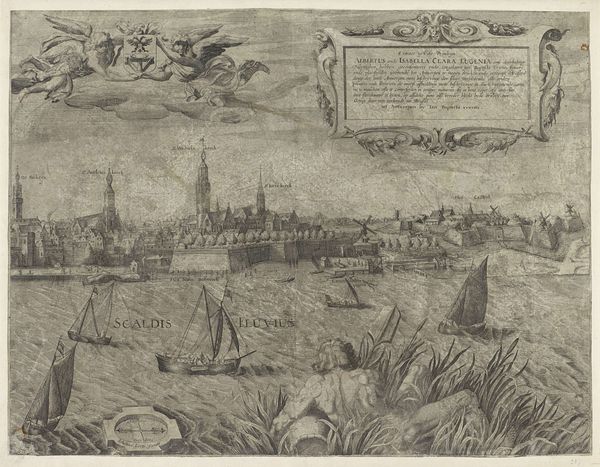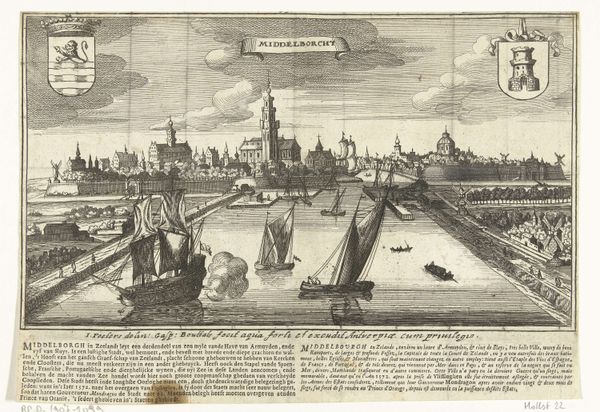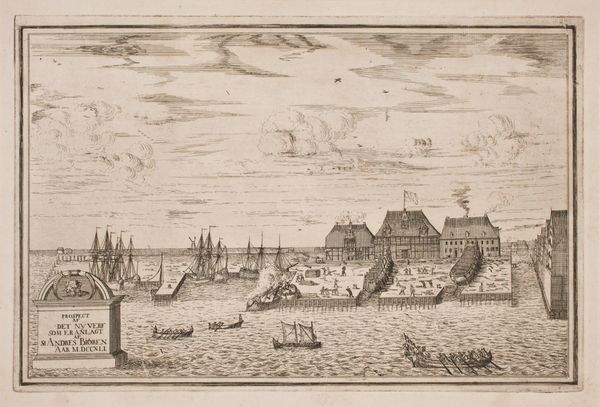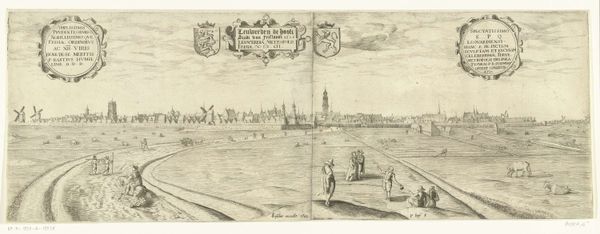
print, engraving
#
dutch-golden-age
# print
#
old engraving style
#
landscape
#
cityscape
#
engraving
Dimensions: height 141 mm, width 254 mm
Copyright: Rijks Museum: Open Domain
Curator: Let's look closely at this 1674 print, "Gezicht op Vlaardingen" by Gaspar Bouttats, held at the Rijksmuseum. What jumps out to you? Editor: Well, it’s a cityscape engraving. It feels quite detailed for something so old, with a lot going on in the water. There are people swimming and in boats in the foreground, while in the background there is what looks like the town of Vlaardingen. I am curious, how do you interpret the daily lives presented through the work, from a Materialist's point of view? Curator: I see it as a visual record of the intersection between labor and leisure within a specific material context. Consider the material production itself: the copperplate engraving. The act of engraving itself requires skill, labour, and the tools. Furthermore, it's meant for reproduction, for consumption. What socio-economic implications can you draw from that? Editor: So, the work is an item to be bought. In addition to its face-value depiction, could the people playing in the river show that there are some for whom daily survival does not involve exhausting manual labour? Curator: Exactly! Or could that the people who are swimming have some commercial interaction with the boats and waterways? How would you describe their relationship with it? Editor: Hmm, well that's an interesting consideration. It seems that the water isn't just recreational but it's central to how people exist. The artwork’s true value becomes clear by viewing it through material, labour, and socio-economic lenses. I didn’t think I could look at a landscape this way. Curator: Precisely! Examining the physical making of the print helps to unveil the story of labour, production, and consumption embedded within its creation and what it is trying to show.
Comments
No comments
Be the first to comment and join the conversation on the ultimate creative platform.
